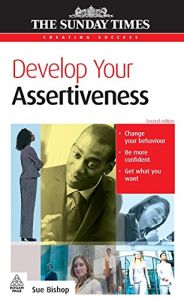Join getAbstract to access the summary!

Join getAbstract to access the summary!
Sue Bishop
Develop Your Assertiveness
Kogan Page, 2006
What's inside?
Being assertive is not just a way of acting, it is a way of life. Boost your self-image. Learn to advocate for yourself.
Recommendation
Would you benefit in your business or in your social life if you became a better advocate for yourself? Unless you are already quite capable of asserting yourself, the answer is probably yes. The problem is that assertiveness training has a bad reputation, as author Sue Bishop acknowledges. In this short, easy book, she suggests ways that individuals can change their behavior to become more confident. You can learn at your own pace, using the book’s self-tests, exercises and comments. Bishop’s handbook does not contain very much that is new, but it is a good tool for people who would like to teach themselves the basics. getAbstract recommends this book to those who want to find out how to persuade others and stick up for themselves. If you’re a manager mired in meekness, here’s your ticket to the limelight.
Summary
About the Author
Sue Bishop is a trainer and consultant, and the author of several training sourcebooks.
















Comment on this summary